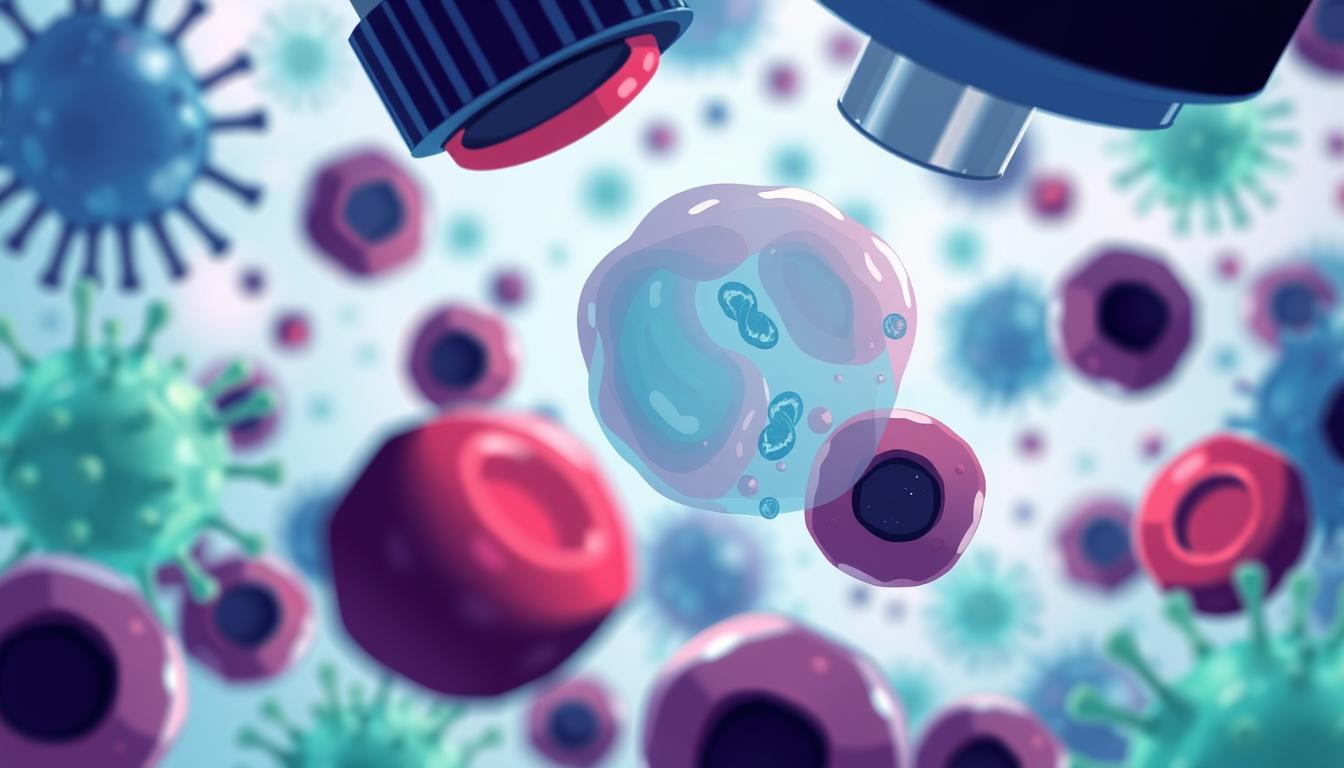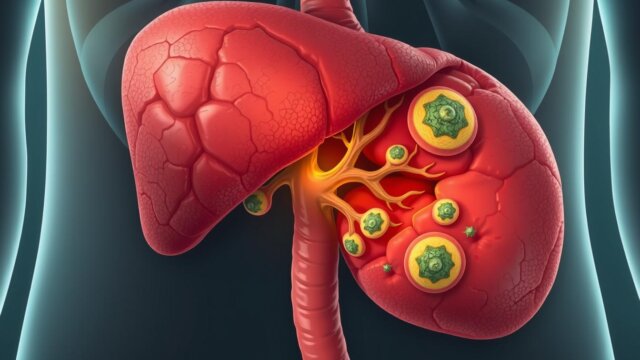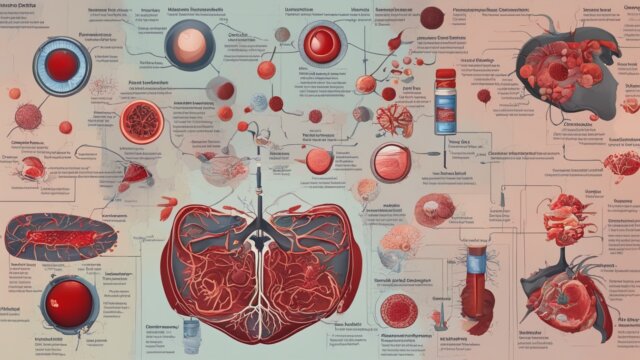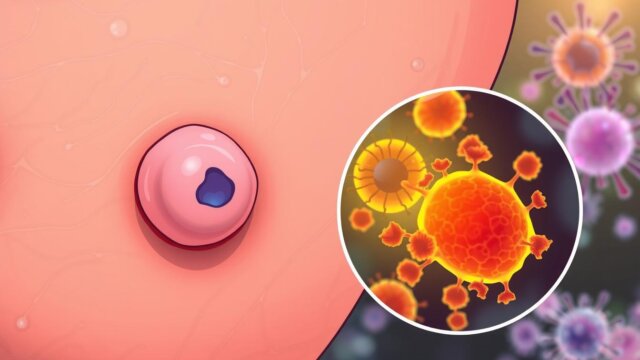FTC disclaimer: This post may contains affiliate links and we will be compensated if you click on a link and make a purchase.
Chronic lymphocytic leukemia (CLL) is a common leukemia in adults. It affects over 150,000 people in the United States each year. This blood cancer starts in the bone marrow. It makes abnormal white blood cells, called lymphocytes, build up and spread.
Unlike fast-growing leukemia, CLL grows slowly. It often doesn’t show symptoms for years. Knowing about CLL’s definition, symptoms, risk factors, and treatments is key.
Key Takeaways
- Chronic lymphocytic leukemia (CLL) is one of the most prevalent types of adult leukemia in the United States.
- CLL originates in the bone marrow, where abnormal lymphocytes accumulate and spread to other parts of the body.
- CLL usually progresses slowly, often without noticeable symptoms for several years.
- Understanding the key facts about CLL, including its causes, diagnosis, and treatment options, is essential for effective disease management.
- Ongoing research and clinical trials continue to explore new approaches to improve outcomes for individuals living with CLL.
What is Chronic Lymphocytic Leukemia?
Definition and Overview of CLL
Chronic lymphocytic leukemia (CLL) is a cancer that affects the blood and bone marrow. CLL is common in adults and often starts in middle age or later. It rarely affects children.
In CLL, abnormal lymphocytes build up in the blood, bone marrow, and lymph nodes, crowding out healthy blood cells. Because of their large numbers, these abnormal lymphocytes may not fight infections well.
CLL is a slow-growing leukemia. The term “lymphocytic” means it affects a certain type of blood cell, and “Chronic” means it grows slowly. It accounts for 25 to 30% of all leukemias in the U.S.
In 2020, there were about 21,040 new CLL cases, leading to 4,060 deaths.
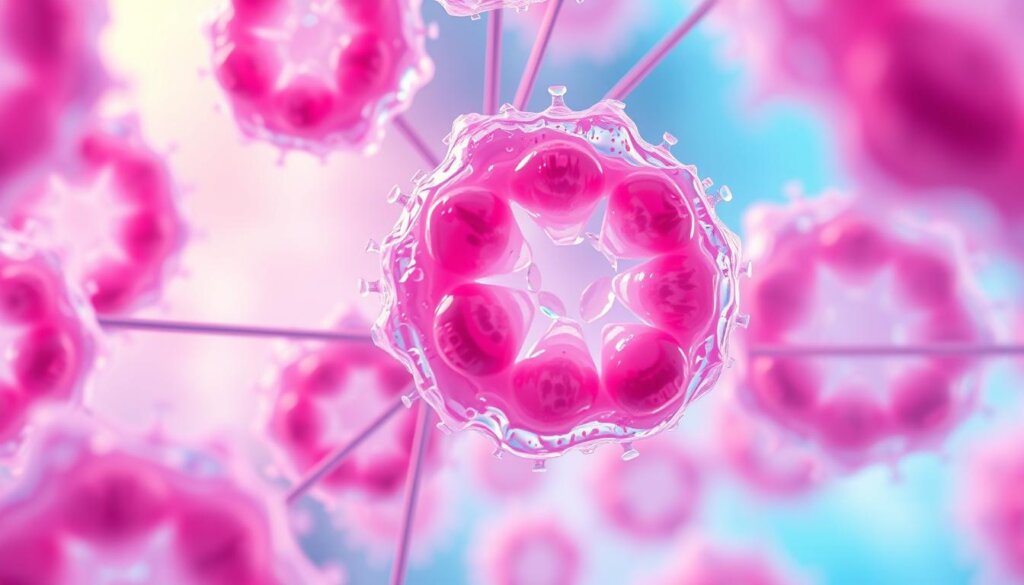
CLL can start in adults as young as 30, but it’s most common in those over 70. It’s more common in men than women, with a ratio of 1.3 to 1 to 1.7 to 1. It’s also more common in Western populations and Caucasians than in Asian Pacific Islanders or African Americans.
Familial CLL is a thing, and first-degree relatives of CLL patients are at double the risk. About 17% of first-degree relatives of CLL patients have monoclonal B cell lymphocytosis, a CLL precursor. CLL’s development involves two steps: the first step creates monoclonal B lymphocytosis cells, and the second step turns them into CLL.
Symptoms of Chronic Lymphocytic Leukemia
Chronic lymphocytic leukemia (CLL) is a slow-progressing blood cancer. It often doesn’t cause noticeable symptoms in its early stages. Many people with CLL don’t notice any symptoms at first. The disease is usually found during routine blood tests or physical exams.
As CLL advances, symptoms may start to show. The most common symptom is enlarged lymph nodes. Other symptoms include fatigue, fever, night sweats, and unintentional weight loss.
People with CLL may also feel full or uncomfortable in the abdomen. This is due to an enlarged spleen or liver. They may also get sick more easily because CLL weakens the immune system.
Not everyone with CLL will have noticeable symptoms, even as the disease gets worse. Some patients can live with CLL for many years without health issues. If symptoms do appear, seeing a healthcare professional for help is important.

The symptoms of chronic lymphocytic leukemia vary from person to person. Regular check-ups with a healthcare provider are key. They help monitor the disease and ensure timely treatment if needed.
Causes and Risk Factors
Genetic Mutations and Risk Factors
Chronic lymphocytic leukemia (CLL) is not fully understood. It involves DNA changes in blood cells, which cause blood cells to not work properly and build up in the blood and organs.
Genetics plays a big role in CLL. If you have a family member with CLL, you’re 5-7 times more likely to get it.
Some genetic changes, like losing part of chromosome 17, make CLL worse. Losing parts of chromosomes 11 and 13 is also common. An extra chromosome 12 is also seen in some cases.
Other things that raise CLL risk include being older, male, white, and exposed to chemicals like Agent Orange. While some genetic changes are inherited, most happen during a person’s life.
Risk Factor | Description |
|---|---|
Age | CLL is more common in older adults, with the average age of onset being 72 years. |
Gender | CLL is twice as common in males as in females. |
Race/Ethnicity | CLL is more common in people of white ethnicity and those of Russian and Eastern European Jewish heritage. |
Family History | First-degree relatives of someone with CLL have a 5-7 times greater chance of developing the disease. |
Exposure to Chemicals | Exposure to certain chemicals, such as Agent Orange, can increase the risk of CLL. |
Genetic changes and risk factors can lead to CLL, but we still don’t know all the causes. Research is ongoing to better understand CLL.
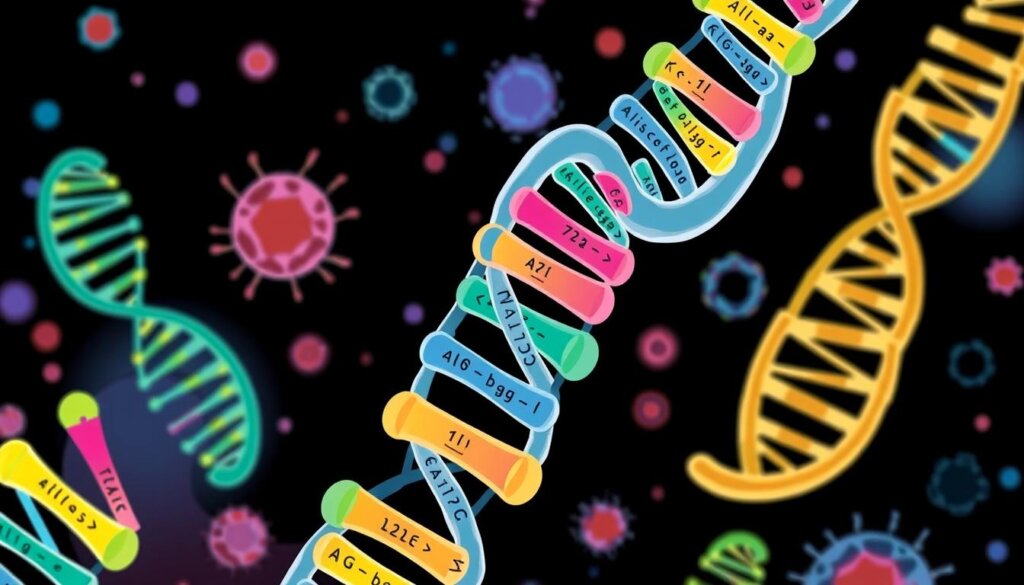
Types and Subtypes of CLL
Chronic lymphocytic leukemia (CLL) is the most common type of adult leukemia. It affects about 20,000 people in the United States each year. Most CLL cases (around 95%) involve B lymphocytes, but there are rare subtypes that start from different lymphocytes.
Prolymphocytic leukemia (PLL) is a fast-growing subtype. It can affect B or T lymphocytes. Large granular lymphocyte (LGL) leukemia starts from T lymphocytes or natural killer cells.
Hairy cell leukemia (HCL) is a slow-growing cancer. It affects B lymphocytes and has “hairy” projections on the cell surface. This rare subtype has unique features that differ from B-cell CLL.
Subtype | Lymphocyte Origin | Growth Rate | Prevalence |
|---|---|---|---|
B-cell CLL | B lymphocytes | Slow-growing | 95% of CLL cases |
T-cell CLL/PLL | T lymphocytes | Fast-growing | 5% of CLL cases |
Hairy Cell Leukemia (HCL) | B lymphocytes | Slow-growing | Rare |
Knowing the different CLL types and subtypes is key to diagnosis and treatment. Each form of CLL has its own traits, outlook, and treatment response, which shows why doctors must perform detailed evaluations.

Chronic Lymphocytic Leukemia Diagnosis
CLL is often found by chance during routine blood tests or a check-up. Doctors then perform more tests to confirm it. They check for too many lymphocytes with a complete blood count and use flow cytometry to examine blood cells and find CLL markers.
Diagnostic Tests and Procedures
Genetic testing is key in CLL diagnosis. It finds specific mutations or changes in leukemia cells. Doctors might also use CT scans or PET scans to see if lymph nodes or the spleen are large. These tests help determine the disease’s stage and type, which in turn helps decide the best treatment.
Diagnostic Test | Purpose |
|---|---|
Complete Blood Count (CBC) | Counts the number of lymphocytes, indicating CLL if levels are high |
Flow Cytometry | Identifies specific markers on cells, crucial for CLL diagnosis |
Fluorescence In Situ Hybridization (FISH) | Examines cancerous lymphocytes for genetic changes to determine prognosis |
Imaging Tests (CT, PET scans) | Check for enlarged lymph nodes, spleen, or other signs of CLL |
These tests and procedures are very important. They help doctors understand CLL. This way, they can plan the best treatment for each patient.
“Accurate diagnosis is key to ensuring patients with chronic lymphocytic leukemia receive the most effective care and treatment.”
Treatment Options for Chronic Lymphocytic Leukemia
Choosing a treatment for chronic lymphocytic leukemia (CLL) depends on several things. These include the disease’s stage, genetic mutations, and the patient’s health and wishes. Doctors now prefer targeted therapies over chemotherapy for CLL.
Today, CLL treatments mainly include drugs like Bruton Tyrosine Kinase Inhibitors (BTKi) and B-cell lymphoma inhibitors (Bcl2). Treatment often starts with a “watch and wait” for slow-growing cases. Then, it moves to first-line treatment and more if needed.
For early CLL without the TP53 gene mutation, doctors might choose acalabrutinib or zanubrutinib, or venetoclax with obinutuzumab. Chemotherapy is not the first choice anymore for CLL. If the TP53 gene is mutated, treatments might include acalabrutinib, zanubrutinib, or venetoclax with obinutuzumab.
CLL often comes back, needing second-line treatment. This can be acalabrutinib, zanubrutinib, or venetoclax with rituximab. Other options include stem cell transplants, radiotherapy, and surgery. Some patients try new treatments in clinical trials.
It’s crucial to talk with your healthcare team about the best treatment for you. They consider your health, wishes, and the latest treatments. The goal is to manage the disease, ease symptoms, and extend life with fewer side effects.
First-Line CLL Treatment Options | Second-Line CLL Treatment Options |
|---|---|
|
|
“The treatment approach for CLL has evolved significantly in recent years, with a focus on targeted therapies and personalized care to improve outcomes and quality of life for patients.”
CLL is a complex disease with a changing treatment landscape. By working with your healthcare team and staying updated, you can find the right treatment for you.
Chronic Lymphocytic Leukemia Prognosis
The outlook for chronic lymphocytic leukemia (CLL) varies a lot. In the UK, about 85 out of 100 people with CLL live for 5 years or more after being diagnosed. For those under 60, almost 95 out of 100 live for 5 years or more.
People aged 60-69 have almost 90 out of 100 chances of living for 5 years or more. Those between 70-79 have more than 80 out of 100 chances. But, those 80 or older have about 65 out of 100 chances.
Genetic factors also affect CLL’s outlook. CLL with a chromosome 13 deletion and no other changes has a better outlook. But, a chromosome 11 deletion, especially with the loss of the ATM gene, means less response to chemotherapy.
Trisomy 12 means an intermediate outlook in CLL. CLL with a 17p chromosome deletion has a poor outlook because of low chemotherapy response. TP53 gene mutation also means poor response to chemotherapy. Unmutated IGHV gene in CLL suggests aggressive disease and poor outlook.
Other factors like age, disease stage, performance status, and gender also matter. People over 70 have a poorer outlook. CLL diagnosed at lower stages (0 or 1) means a better outlook. Good performance status at diagnosis also means a better outlook. Men with CLL face a worse outlook than women.
The CLL International Prognostic Index (CLL-IPI) helps predict CLL’s prognosis. It divides people into 4 risk groups: low-risk, intermediate-risk, high-risk, and very high-risk.
In the US, the 5-year relative survival rate for CLL in adults is 87%. Survival rates for leukemia have improved greatly over the past 40 years. However, CLL is not curable, and the 5-year survival rate is around 87% for adults 20 or older.
“A higher stage number in the Rai system for CLL indicates that CLL is impacting more of the body and often shortens a person’s life expectancy.”
In summary, CLL’s prognosis depends on age, genetic mutations, disease stage, and overall health. While the outlook has improved, CLL is still a complex and challenging disease. Regular monitoring and personalized treatment are key to managing CLL and improving outcomes.
Living with Chronic Lymphocytic Leukemia
Coping and Support Resources
Getting a CLL diagnosis is tough, but there’s help out there. CLL can’t be cured, but most people live a long time with it. Over time, most CLL patients need treatment, often on and off for years. With the right support, many people with CLL live well.
Being part of a CLL support group can be very helpful. It’s a place to share, learn, and get info about CLL. People with CLL often get sick easily because their immune system doesn’t work right. Doctors can also help find counseling, nutrition advice, and other support.
Some CLL treatments can make infections worse. It’s very important to have health insurance. Tests, doctor visits, and treatment can be very expensive. Also, CLL survivors are at higher risk for getting another cancer.
Feeling down, anxious, or worried is common in cancer patients. CLL treatment doesn’t cure the disease, and it often comes back. Using many ways to cope with CLL can help people live well with this disease.
Coping Strategies for CLL Patients | Benefits |
|---|---|
Joining a CLL support group | Provides a sense of community, shared experiences, and access to information |
Seeking counseling and mental health support | Addresses emotional and psychological aspects of living with CLL |
Maintaining a healthy lifestyle | Helps manage treatment side effects and improve overall well-being |
Accessing financial and practical resources | Assists with managing the costs and logistical challenges of CLL care |
“The goal of treatment in CLL is often focused on enabling patients to maintain as normal a life as possible, including spending time with family and friends, returning to work, and engaging in enjoyable activities.”
CLL patients can face challenges and live well by using a wide range of strategies.
Ongoing Research and Clinical Trials
Research on chronic lymphocytic leukemia (CLL) is growing fast. Experts are working hard to better understand and treat this blood cancer. Many clinical trials are investigating new treatments and ways to target CLL.
A big study is comparing two treatments for people with CLL. Another is testing a new drug for those who have CLL again. There’s also a study on a new treatment for a rare and serious form of CLL.
Scientists are studying CLL’s genes and how it works. They want to know how the disease starts and how it can be treated. They are also working together to share CLL samples for research.
A study is looking at family history to find CLL genes. This could help prevent and diagnose CLL better. Famous research labs are also working on CLL.
Research on CLL is conducted worldwide every year. Experts recommend considering a clinical trial for treatment, which can provide access to the latest treatments.
New drugs are now the main treatment for CLL. They work better and have fewer side effects. New treatments, like CAR T-cell therapy, are being tested in trials.
Understanding CLL’s genes is key to better treatments. CLL is the most common leukemia. Ongoing research is making progress in treating this disease.
Clinical Trial | Description | Location |
|---|---|---|
Study ID 22-303 | A phase 3 trial comparing acalabrutinib plus venetoclax versus venetoclax plus obinutuzumab for newly-diagnosed CLL | Multicenter |
Study ID 21-279 | A phase 2 trial of zanubrutinib and venetoclax for relapsed/refractory CLL | Multicenter |
Study ID 23-429 | A phase 2 study of glofitamab monotherapy or in combination with other treatments for Richter’s Syndrome | Multicenter |
A Genetic Study of Familial Chronic Lymphocytic Lymphoma | A study led by Jennifer R. Brown, MD, PhD, to identify disease-causing genes for preventive and diagnostic methods | Enrolling participants |
Venetoclax-obinutuzumab (VenG) retreatment study | A study involving approximately 75 adult participants with CLL, conducted in approximately 60 sites worldwide | Multicenter |
XmAb13676 safety and tolerability study | A study to determine the safety and tolerability of intravenous (IV) and subcutaneous (SC) administration of XmAb13676 | La Jolla, California, and other locations |
Venetoclax and ibrutinib combination study | A study investigating the combination of venetoclax and ibrutinib for CLL or SLL, focusing on a dose of up to 840 mg per day for ibrutinib | Multicenter |
Idelalisib (IDELA) study | A study on idelalisib for individuals with relapsed, previously treated CLL, led by Thomas J Kipps, MD, PhD, Michael Choi, MD, and Ariel Portera, DO | Multicenter |
Conclusion
Chronic lymphocytic leukemia (CLL) is a complex blood cancer. It often grows slowly. Knowing its symptoms, causes, diagnosis, and treatments is key. This knowledge helps you work with your healthcare team to manage CLL.
New research and treatments offer hope for CLL patients. Novel oral targeted therapies like venetoclax and Bruton tyrosine kinase inhibitors have improved outcomes.
It’s important to understand CLL well. Knowing about prognostic markers, comorbidities, and the immune system is crucial. You can improve your care and outlook by staying informed and managing your health.
